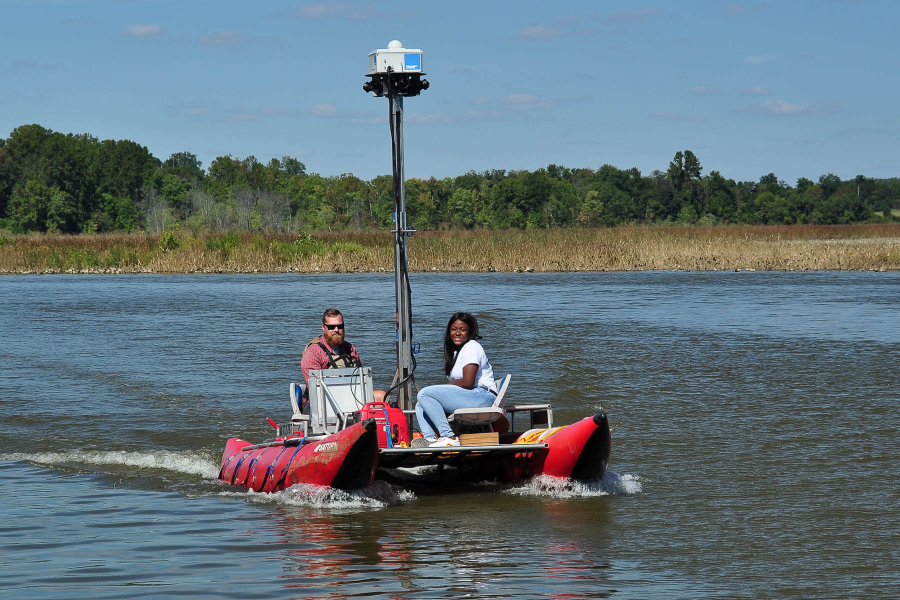Environmental education adapts to virtual learning

During the past several months, the COVID-19 pandemic has changed how we shop, how we work and how we acquire knowledge. K-12 education has been significantly disrupted, with outdoor environmental education in and around the Chesapeake Bay watershed particularly strained.
Under the Chesapeake Bay Watershed Agreement, the Chesapeake Bay Program committed to an “Environmental Literacy Goal” aimed at enabling students in the region to graduate with the knowledge and skills to protect and restore their local watershed. This includes providing students with Meaningful Watershed Educational Experiences (MWEEs) in which students investigate environmental challenges, develop actions that address the issues and evaluate their impact. When schools shut down in March 2020, the culminating field trips and action projects for countless environmental education experiences for students were abruptly canceled.
Most schools will be hesitant to host field trips because of the difficulty of maintaining social distance on a school bus and the fear of exposing students to additional risk out in the field. Visitors may be limited on campus, which could mean that nontraditional educators like those who teach environmental education won’t be allowed to visit schools to engage with students and support teachers.
With such uncertainties, environmental education providers are developing creative new ways to deliver programming to ensure students still participate in these life changing experiences. Organizations such as the National Park Service, National Oceanic and Atmosphere Administration, the Chesapeake Conservancy and Potomac Conservancy are gearing up their camera equipment to provide virtual field experiences, giving even more students access to environmental education. Multimedia content also gives students the opportunity to gain a more in-depth understanding of subjects such as underwater grasses, air pollution and stormwater runoff, among others.
However, environmental education is not complete without experiencing and engaging with nature. One positive outcome of the COVID-19 pandemic is that it has shown people the importance of getting outside. Outdoor experiences provide a safer environment for education during the pandemic than traditional classroom settings, and it also provides mental health benefits that can help to calm students during these trying times. Field trips may not be possible, but outdoor experiences such as MWEEs that take place on school grounds or at a student’s home are. Now more than ever we need to communicate the importance of outdoor education and encourage our schools and districts to create outdoor classrooms and broadly adopt policies that support nature-based learning.
But before we get back in the classroom, parents have a wonderful opportunity for outdoor education now. During the pandemic, parents are getting more time with their kids that need to be filled. As a mom of a three-year-old, I am constantly finding ways to fill their day and shorten screen time. What better way to unplug your kids than to get them outside to learn about trees, plants and bugs in the yard? There are many wonderful lessons and apps that can help you structure your time outdoors. One such app, PlantSnap, can help to identify plants by simply snapping a photo. Another easy activity is to plan a scavenger hunt with things in your yard and community. Take advantage of more time at home by getting your children to explore the watershed they live in!
Want to find out more about easy outdoor education? Check out these resources!
- Bay Backpack: Access educational resources for caregivers, students and educators, as well as other content to help you develop MWEEs.
- Find your Chesapeake: Find and plan outdoor activities in the Chesapeake Bay watershed with this resource-packed website from the National Park Services.
- Chesapeake Bay Program Field Guide: Explore the Field Guide to learn about more than 250 species of birds, fish, insects, invertebrates, mammals, plants, reptiles and amphibians that live in the Chesapeake Bay region.
- Chesapeake Bay SAV Watchers Program: Become a volunteer scientist with an engaging and educational experience with underwater grasses while also generating useful data for Bay scientists and managers.

Comments
There are no comments.
Thank you!
Your comment has been received. Before it can be published, the comment will be reviewed by our team to ensure it adheres with our rules of engagement.
Back to recent stories